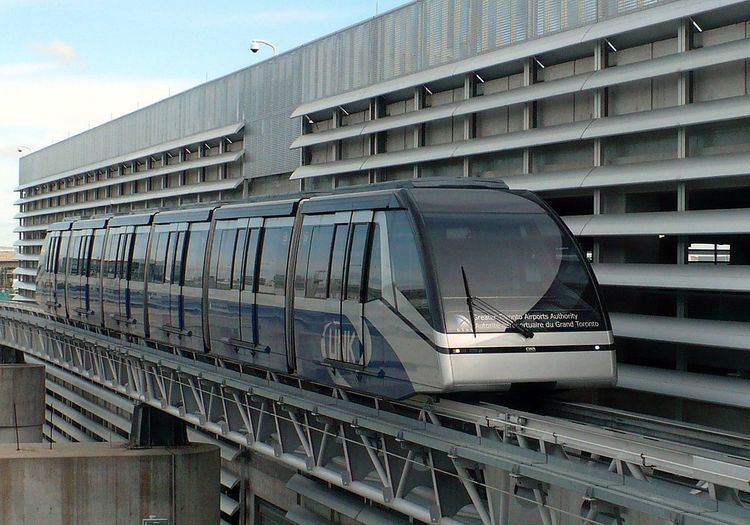Type People mover Termini Terminal 1
Viscount Services 1 | Status Operational Stations 3 | |
 | ||
Locale Toronto Pearson International Airport, Mississauga, Canada | ||
The LINK Train is an automated people mover (APM) at Toronto Pearson International Airport in Mississauga, Ontario, Canada. The wheelchair-accessible train runs 24 hours a day, seven days a week and is completely free-of-charge to ride. In 2012, it transported 17,000 passengers daily, 60- to 70% of whom were airport staff.
Contents
History
The original proposal for an automated people mover system at Pearson Airport was submitted in May 2002. Six months later, on November 15, 2002, a $55-million contract was signed with DCC Doppelmayr Cable Car GmbH of Wolfurt, Austria, followed by four years of construction, and the system opened to the public on July 6, 2006. The new service initially operating alongside its predecessor, the LINK shuttle bus system.
The system cost $150 million.
Design and rolling stock
The LINK Train uses a pair of Cable Liner trains. They use a cable-hauled, drive and tension system. Each train has capacity for 175 passengers with baggage (25 per car: 17 standing, 8 seated) or 2,500 passengers per hour per direction (pphpd).
The two trains, plus a small work car, cost a total of $56 million CAD when delivered. They were refurbished in 2013, and received a new paint scheme, new seats, and a seventh car (they were originally delivered and used as six-car trains).
Stations and operation
The two fully elevated lines, running side-by-side, are 1.46 kilometres (0.91 mi) long, reach a maximum speed of 43.2 kilometres per hour (26.8 mph)., and have a travel time of three minutes one way. They serve a total of three stations:
The 1,473 metres (4,833 ft) elevated system
Both lines operate independently in shuttle mode with a total capacity of up to 2,180 pphpd. The trains run on rubber tires on a smooth steel surface and all propulsion is provided by the rope. The absence of onboard motors, braking systems and gearboxes eliminates excessive noise, oil spills from the trains, and dust from brakes. Doppelmayr asserts that a cable-driven APM is the most environmentally responsible solution for transportation in high density applications.
Disruptions
On March 30, 2009, the LINK Train was put out of service for extensive maintenance due to engineering design flaws. During this time, service was replaced by an inter-terminal shuttle bus contracted to Penetang-Midland Coach Lines. Normal service resumed in July 2009.
On March 16, 2013, the LINK Train was shut down for approximately eight months during construction of the Union Pearson Express. The trains were refurbished during this time and received a seventh car, new seats, and a new paint scheme.
Connections
The Union Pearson Express airport rail link service between Pearson Airport and Union Station in Downtown Toronto opened on June 6, 2015, in time for the 2015 Pan American Games. It directly serves Terminal 1, with a connection to Terminal 3 via the LINK Train.
A number of public transport bus services in the GTA have a stop on the lower level of Terminal 1; these include the Toronto Transit Commission (TTC), MiWay, Brampton Transit, and GO Transit. The TTC has an additional stop on the lower level at Terminal 3, served after departing Terminal 1.
As originally proposed, the Eglinton Crosstown LRT was to connect Pearson Airport with Scarborough by 2018 as part of the Transit City plan. However, when the four Transit City lines were found to be $2.4 billion over their funding envelope in January 2010, parts of the network were deferred, including the western section of the Eglinton Crosstown LRT. A future extension could eventually reach the airport, completing the line as envisioned.
